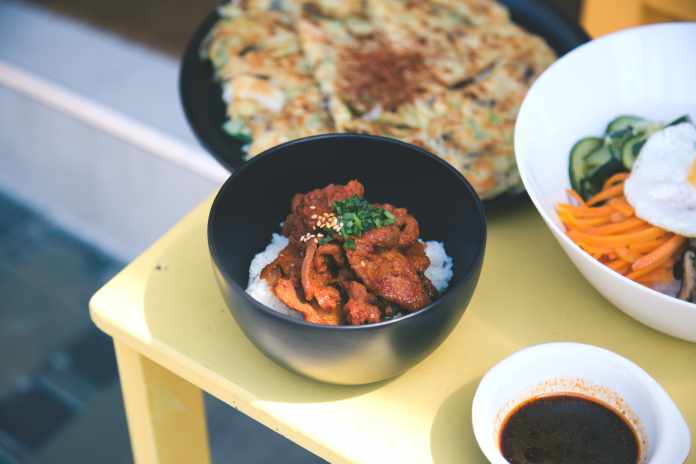Many Japanese cuisines are patronized and located worldwide for their exemplary dishes. It offers a variety of delicacies that are different from other restaurants. Japan is a country with rich culture and tradition seen in various ways, and among these is the uniqueness of its cuisines. Moreover, Japanese restaurants serve 100% organic and fresh vegetables, meat, seafood, and spices. People all around the world are searching for the authenticity of Japanese food. On the internet, you can see Japanese delicacies anywhere, including incredibly mouth-watering Mukbangs.
Various spices are found at local supermarkets, and sort of alternatives too. For instance, you can find a mirin substitute and use it to make a flavorful dip. Surprisingly, you can add a twist to create an extraordinary dish. This article listed easy recipes that enable you to recreate several dishes like those seen in Japanese anime and J-drama. Prepare a wholesome Japanese meal for your family today.
Table of Contents
1. Yaki Onigiri or Grilled Rice Balls
Yaki onigiri is a grilled Japanese rice ball. In Japanese, the word “yaki” means “grilled.” They are small triangular rice balls, and Yaki onigiri is commonly coated in soy sauce, but the name implies grilled rice balls.
Soy sauce is the most common flavor of yaki onigiri. However, there are numerous other sauces and filling options to create delicious flavor variations. You can try the miso butter to make it different from the usual. Miso and butter match each other perfectly and provide a burst of umami flavor complemented by simple white rice.
Steps on making Yaki Onigiri:
- Fill or combine the onigiri with grilled salmon, canned tuna, chicken, sesame seeds, and kanikama.
- Make onigiri out of takikomi gohan and grill them.
- Instead of soy or miso, coat the onigiri with a spicy gochujang paste.
- Lastly, wrap the Yaki onigiri in seaweed.
2. Stir Fry Japanese Beef Ramen
Ramen indeed is one of the crowd’s favorite Japanese meals. Ramen is a type of Japanese noodle soup, and it is from the Chinese-style alkaline wheat noodles served in a meat-based broth. Ramen is flavored with soy sauce or miso and topped with sliced pork, nori, and scallions. It is perfect for special occasions, mainly dates with friends and family.
This stir fry beef ramen impresses every person at your house, and it feels like they are eating at the finest Japanese restaurant. You can make this dish for 20 minutes, and your family deserves an excellent dish like this!
Steps in making the stir fry Japanese beef ramen:
- Heat the oil in a large saucepan. First, cook the onions, peppers, and broccoli until they are tender for about 10 minutes. Then, add and saute the ground beef until it is no longer pink, about 5 minutes more.
- To make the sauce, combine soy sauce, brown sugar, apple cider vinegar, Sriracha, and garlic in a mixing bowl.
- Bring water to a boil in a medium saucepan. Cook until the ramen noodles are tender, about 2 minutes. After that, drain the water.
- Lastly, pour sauce over cooked ramen noodles in the pan. Mix until well combined, then top with spring onions and serve. Bon appetit!
3. Sakana No Nitsuke (Japanese Simmered Fish)
This next dish is efficient to prepare at home and does not take so much time to prepare, cook and serve. Sakana no netsuke is a Japanese term for fish (Sakana) simmered in a sauce (netsuke). RockfishFlounder, mackerel, and black cod are among the more common types of fish used in this traditional Japanese dish.
Follow these easy-to-follow steps to make the best Sakana No Natsu:
- First, cut the fish filets into rectangular pieces and place them on foil large enough to enclose the filets completely. Then, garnish the fish with carrots and mushrooms.
- Second, add and mix the sake, soy sauce, mirin, and pepper. Pour the mixture over the fish, ensuring the foil keeps the liquid inside. Fold foil over fish and mixture to enclose; fold and tuck in sides to secure. Leave it for 5 to 10 minutes to absorb and marinade.
- Lastly, heat a steamer on medium heat. Steam the filet for 15 minutes or until the fish is fully cooked. You can garnish the finished dish with cilantro leaves if desired.
Present it with a nice plating and serve it with pasta or rice. Enjoy!
4. Chicken Teriyaki
A Teriyaki dish is a popular dish in Japanese Restaurants, and it is rich in flavor and satisfies every bite. Furthermore, teriyaki is not a sauce but a cooking technique originating in Japan, and it consists of boiling meat or seafood with a sweet and salty soy glaze.
Simple steps in making the Chicken Teriyaki:
- To make the sauce, combine soy sauce, rice vinegar, oil, honey, garlic, ginger, and cornstarch in a medium mixing bowl.
- Season the chicken with salt and pepper. Then, cook for 10 minutes, or until golden and almost done.
- Pour sauce over chicken and cook for 5 minutes, or until sauce has thickened slightly and chicken is cooked through.
- Serve with sesame seeds and scallions as garnish. You can serve this dish with rice and steamed vegetables.
A special dish with your special ones! Enjoy this meal over a conversation full of joy and laughter!
5. Tamagoyaki (Japanese Rolled Omelet)
Tamagoyaki is a traditional Japanese dish made by carefully rolling several thin layers of cooked egg into a rectangular omelet. It creates a soft and delicate texture for the omelet. Moreover, this Japanese omelet is sweet and light in texture and goes well with sushi rice and soy and wasabi sauce for dipping.
How to make Tamagoyaki:
- In a mixing bowl, thoroughly beat the eggs and whisk in the dashi stock, sugar, mirin, and soy sauce until the sugar is dissolved.
- Heat a nonstick skillet over medium heat.
- Pour a thin layer of the egg mixture into the hot pan and swirl it around to coat it. Cook for one minute until the egg layer is firm on the bottom but still slightly liquid on top.
- Then, lift one edge of the egg layer using a spatula, and roll it. You must roll up the thin omelet layer quickly before thoroughly cooking. Moreover, move the pan closer and farther away from the stove to control the heat.
- Arrange the omelet roll on one side of the skillet. Oil the skillet again and pour another thin layer of egg, lifting the first omelet roll to allow the egg to flow underneath; roll up the first omelet in the new layer of egg and push the omelet to the edge of the skillet as before.
- Repeat with the remaining egg mixture, oiling the pan if necessary.
- Prepare the omelet with presentable plating.
Conclusion
Japanese cuisine is loved and admired by many. These delicious meals say a lot! It is time to impress your loved ones with Japanese meals, especially made by you.
We hope that this article has helped you. Check out more on Recipes.net!








